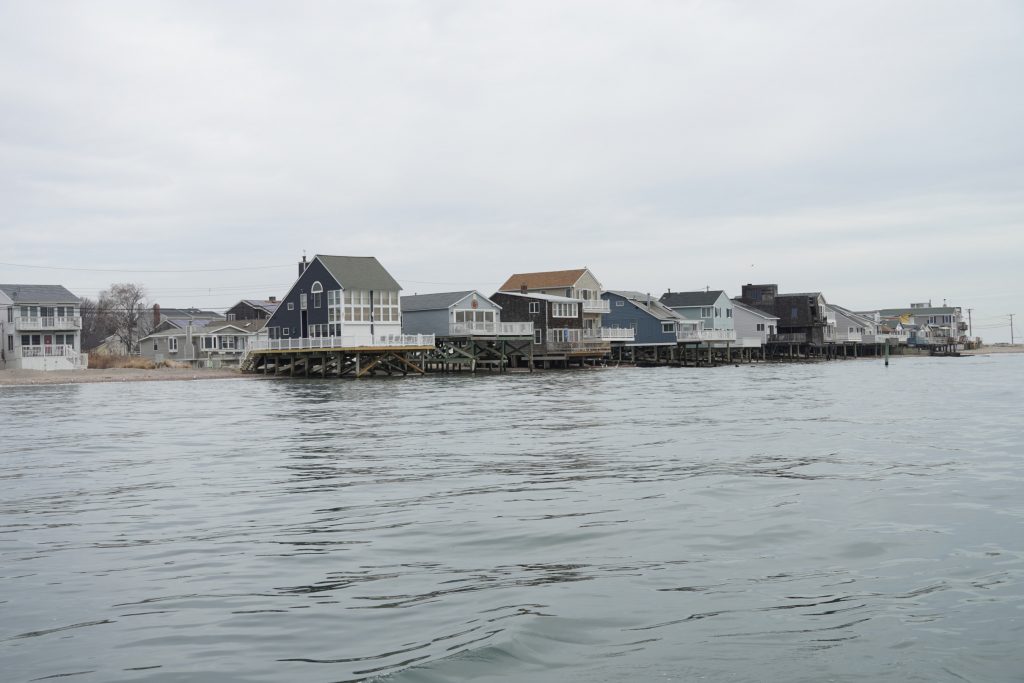by Savannah Mather
This is a guest post based on the author’s journalistic research, which included a conversation with Anthony Allen, assistant director of ecological restoration at Save the Sound.
Sea levels along with the coast of Connecticut are expected to rise 20 inches by 2050, putting hundreds of thousands of people and their homes at risk as glaciers continue to melt in the Arctic, ocean temperatures rise and patterns in water runoff change, all due to climate change.
Homes in Fairfield County and the Southern coast of Connecticut are especially at risk with climatecentral.org’s “risk finder” projecting a 67% chance a flood over 6 feet will occur in the next 30 years. There are also risks as storms will intensify, threatening critical marshlands that protect valuable marine life, and even help sequester carbon from the atmosphere.
But according to Anthony Allen, assistant director of ecological restoration at Save the Sound, people who live on the coast will have to make a tough decision whether to move or not because the state of Connecticut doesn’t have a strategy for purchasing properties from homeowners to restore the coasts and allow for marsh migration while also allowing families to relocate. Wealthy homeowners will be able to protect their homes by raising them or reinforcing their local coastline, however many others will not.
“Homeowners along the coast, there’s going to be a time when you need to make the decision to leave,” Allen said.
Allen said that Connecticut is an example of a new development in flood prone areas, meaning that the state is continuing to build and rebuild at an alarming rate in flood-prone areas. And while the frequency of precipitation is not likely to increase, the intensity of it is, which means that billions of dollars in home value in the Fairfield County area will be compromised by 2050.

Allen joined Save the Sound, which works across the Long Island Sound watershed in Connecticut and New York, in May 2019. The organization advocates for wildlife restoration and preservation along the Long Island Sound, as well as other inland projects such as dam removal, watershed planning, green infrastructure development and monitoring Connecticut’s climate and energy plans.
Aside from residential areas, Connecticut’s ecosystems and shoreline habitats are also at risk for destruction due to climate change. Allen stated that the shore’s tidal marshes are especially at risk, which is concerning considering their role as an area that helps mitigate the effects of climate change.
“Marshes are the ecosystem we really need to look at,” Allen said, “Tidal marshes are on the front lines of climate change. Carbon is stored in these tidal marshes, mangroves and seagrass areas.”
Tidal marshes are valuable in protecting the coast from significant storm damage and erosion. They also act as key habitats for migratory birds, and sequester carbon from the atmosphere. Sea levels are rising at a rate faster than these shoreline ecosystems are able to accrete, putting them at risk of drowning.
“We have the tools and the understanding to keep pace with climate changes. We just need the will and the funding to do it,” Allen said.
There is a concern shared between both Allen and other environmental advocates at Save the Sound that climate change is not stressed as much as it should be in the state of Connecticut. The state has not experienced a major climatic tragedy that can be attributed to warming temperatures, making the issue seem less relevant especially to inland communities, Allen said.
“Climate change and the way we talk about it is [like] it’s a global phenomenon. We think of extreme weather events. So Connecticut is in a drought right? But it’s not as extreme as California being in a drought. Those impacts aren’t experienced the same way,” Allen said.
There is hope, however, that climate change will become a part of a larger conversation among Connecticut residents since the state became the first in the nation to pass a bill last year mandating the teaching of human-induced climate change.
“We need to make this global phenomenon, local,” Allen said.
Savannah Mather is a junior at the University of Colorado Boulder studying environmental journalism. She currently writes for the opinion section at the CU Independent, the university’s student-run news site. Currently home due to COVID-19, she has written a series of stories in recent months that investigate environmental risks and injustices as they appear in the State of Connecticut.
Contact Savannah at savannah.mather@colorado.edu
